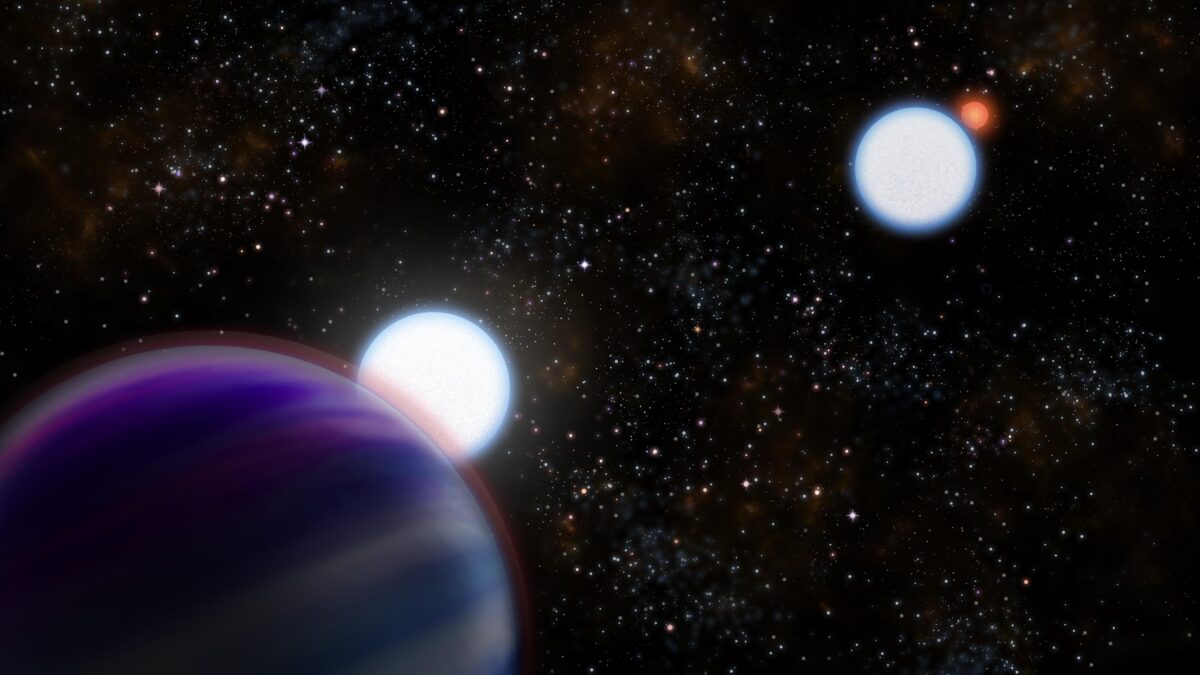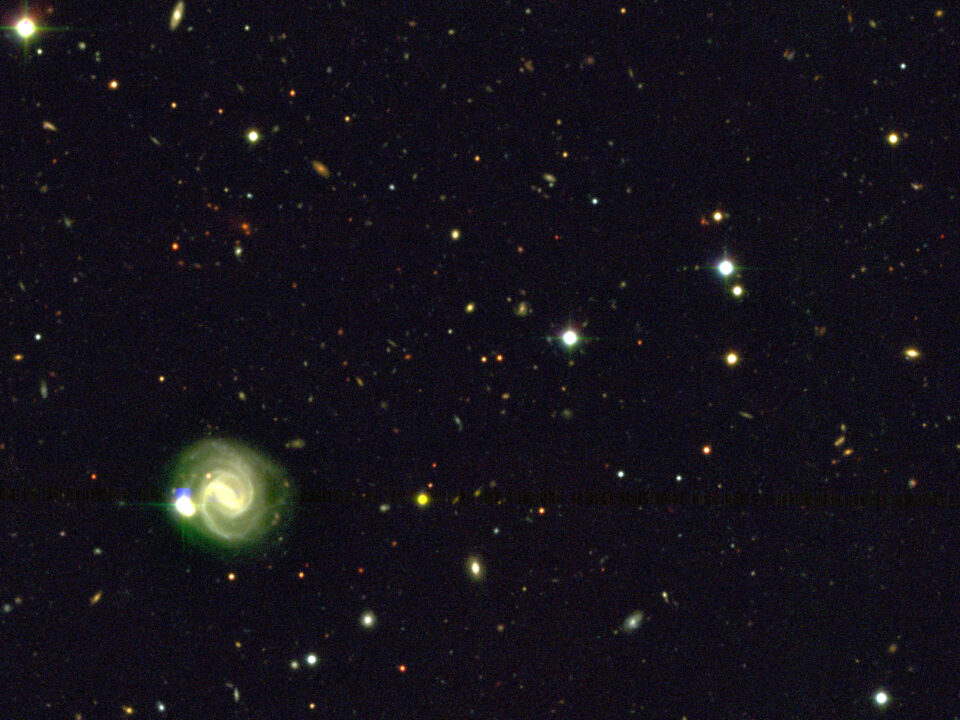Exoplanets Can’t Hide Their Secrets from Innovative New Instrument

In Memory of Barry Taniguchi: A Community Leader and Friend of Science, Education and Hawaii’s Keiki
September 26, 2019
Astronomers Set a New Record for the Oldest Group of Galaxies in Our Universe
September 27, 2019Artist's conception of the Kepler-13AB binary star system as revealed by observations including the new Gemini Observatory data. The two stars (A and B) are large, massive bluish stars (center) with the transiting "hot Jupiter" (Kepler-13b) in the foreground (left corner). Star B and its low mass red dwarf companion star are seen in the background to the right. Credit: Gemini Observatory/NSF/AURA/Artwork by Joy Pollard
The discovery of planets orbiting other stars has changed the view of our place in the Universe. Space missions like NASA’s Kepler/K2 Space Telescope and the Transiting Exoplanet Survey Satellite (TESS) have revealed that there are twice as many planets orbiting stars in the sky than there are stars visible to the unaided eyes. While these telescopes identify exoplanets by detecting the tiny dips in the brightness of a star when a planet crosses in front of it, they do have their limits. “One of the major discoveries of exoplanet research is that about one-half of all exoplanets orbit stars that reside in binary systems. Making sense of these complex systems requires technologies that can conduct time sensitive observations and investigate the finer details with exceptional clarity,” said Steve B. Howell of the NASA Ames Research Center.
Howell and his team used ‘Alopeke, a powerful new high resolution imaging instrument of their own design at the 8-meter Gemini North telescope on Maunakea, to observe exoplanet Kepler-13b as it passed in front of one of the stars in the Kepler-13AB binary star system some 2,000 light years away. Using a process called “speckle imaging,” the team’s analysis revealed a clear drop in the light from Kepler-13A proving that the planet orbits the brighter of the two stars. “Our work with Kepler-13b stands as a model for future research of exoplanets in multiple star systems,” said Howell. “The observations highlight the ability of high-resolution imaging with powerful telescopes like Gemini to not only assess which stars with planets are in binaries, but also reliably determine which of the stars the exoplanet orbits.” ‘Alopke, a contemporary Hawaiian word for Fox, has an identical twin at the Gemini South telescope in Chile named Zorro which is the Spanish word for Fox.




